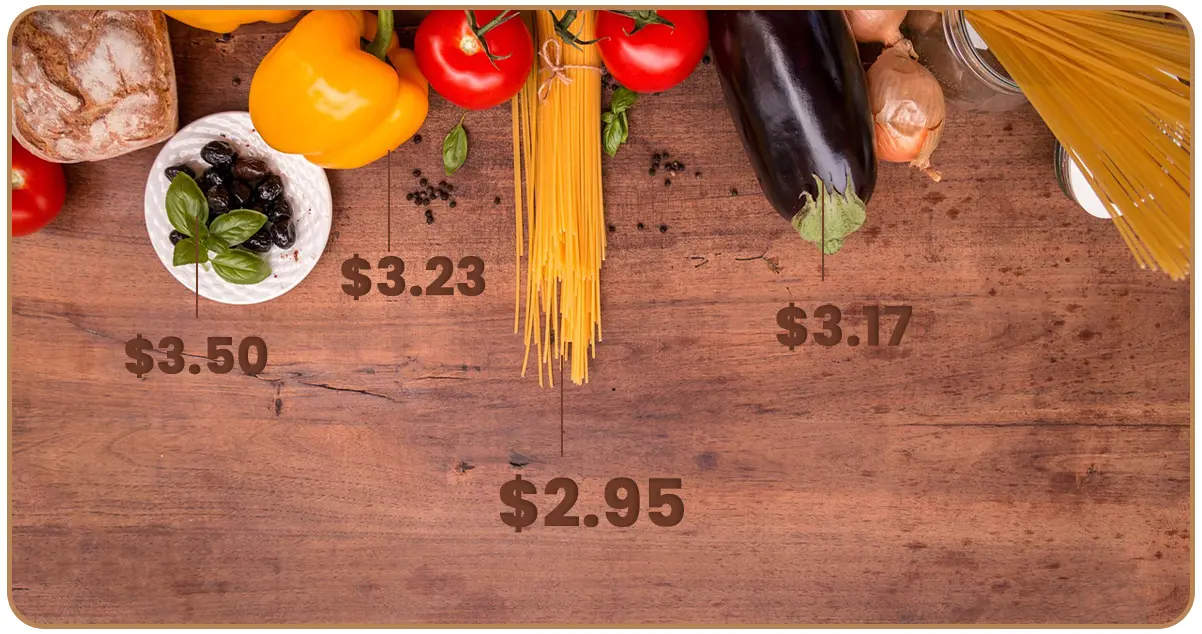Grocery data scraping revolutionizes how consumers shop by offering real-time insights and pricing trends. This method requires systematically reviewing information from online sources like supermarkets, websites, aggregators, and marketplaces. You can quickly build a database using advanced scraping techniques that comprise product specifications, availability, and pricing information. The information obtained by scraping daily grocery price data in Australia has the potential to provide benefits to both consumers and retailers. This data helps consumers make data-driven purchase decisions and enables retailers to analyze market trends, set price strategies, and optimize inventory management. From tracking the daily dynamics of fruit and vegetable prices to regular checking in on the discounts offered on the shelves, scraping grocery data allows for unprecedented transparency and effortless navigation of the fast-changing consumer goods market. It is the tool that equips people to make better decisions and helps businesses stay afloat in the increasingly challenging grocery market.
Why is it essential to scrape grocery price data daily?

Scraping grocery price data regularly is imperative for multiple reasons, revealing exclusive information to consumers and retailers. Here's why a daily scraping for grocery prices is indispensable:
Price Transparency: Constant scraping would allow consumers to find the current pricing information, which would, in turn, empower them to make intelligent buying decisions and discover the best offers.
Market Analysis: Frequent grocery price scraping allows retailers to analyze the market condition, spot pricing trends and patterns, and make proper decisions to stay competitive.
Dynamic Pricing: By extracting information daily, retailers can make dynamic price adjustments based on real-time market changes to increase their revenue and reduce stockouts.
Promotion Tracking: Daily price scraping enables retailers to monitor promotions' successes and make adjustments as needed, aiming to drive sales and customer engagement.
Consumer Behavior Insights: Daily data scraping results in excitement about the customer, customer behavior, desires, and buying patterns understanding so sellers can adjust their offerings to match customer tastes perfect.
Competitive Intelligence: A grocery price data scraper gives the retailer a competitive advantage by allowing it to monitor other retailers' pricing strategies and product assortments, which helps retailers respond much faster.
Inventory Management: Accurate and timely pricing obtained via real-time grocery price scraping allows efficient inventory management, which in turn helps retailers properly coordinate stock levels to lessen wastage.
Seasonal Trends: Constant monitoring of the daily price fluctuations within the grocery sector helps retailers forecast demand and modify inventories and pricing accordingly to seasonal changes.
Supply Chain Optimization: Scraping price data daily helps retailers perceive supply chain factors, find bottlenecks, and optimize sourcing and distribution processes.
Customer Satisfaction: Offering accurate and consistent pricing information using grocery data scraping services can build trust and satisfaction, influencing loyalty and customer retention.
How are Australian Businesses Benefitting from Scraped Grocery Price Data?

Australian businesses are taking advantage of scraped grocery price data, which allows them to gain a competitive edge and enhance several operations functions. Here's how they're benefitting:
Competitive Pricing Strategies: Through scraping data from rivals, companies can modify dynamic pricing strategies to stay competitive.
Dynamic Pricing: Scraped data allows businesses to implement dynamic pricing algorithms that respond quickly to demand, supply, and competitor pricing changes.
Market Insights: It allows businesses to learn more about the market and identify emerging consumer preferences, helping them evolve their offerings accordingly.
Inventory Management: Instant and accurate price data allow businesses to efficiently maintain inventory levels, lowering overstocking or stockouts and, thus, reducing carrying costs.
Promotion Effectiveness: Businesses will be able to evaluate the scraped data to measure the extent of their promos. It will enable them to revise their marketing strategies and attain better ROI.
Supply Chain Optimization: By tracking price data from suppliers and wholesalers, businesses can improve their supply chain management, simplify procurement processes, and secure better terms.
Consumer Behavior Analysis: Scraping data allows businesses to comprehend consumer behavior and tastes, resulting in precise and personalized customer acquisition.
Forecasting and Planning: It aids in precise demand prediction, which helps businesses understand market trends and efficiently plan resources.
Brand Positioning: Companies can effectively use scraped data to position their business brands by featuring competitive pricing and highlighting value propositions against competitors.
Customer Engagement: Giving customers real-time prices accommodated on an app or a website promotes customer satisfaction and loyalty by building trust, therefore raising the customer's number of purchases.
Steps to scrape grocery price data daily

Scraping grocery price data daily involves several steps. Here's a general outline:
Identify Websites: First, you must identify the websites from which you will scrape the shopping data price. These could be an online grocery store, supermarket websites, or other sites that provide frequent price updates.
Inspect Website Structure: The next step is to examine the structure of the websites. It is done by understanding the architecture of the HTML pages that carry the data from which the prices are obtained. You may use browser developer tools to peek inside HTML elements.
Select a Scraping Tool: There are specific tools and libraries for web scraping. Some popular ones are BeautifulSoup in Python, Scrapy, or Selenium. Select the one that best fits your needs.
Write Scraping Code: Scrape the HTML code of the web pages and retrieve the required data. Here, you need to select the relevant HTML elements with the price data and then use a scraping tool to extract the data from those elements.
Handle Dynamic Content (if necessary): Some websites use dynamic content loading techniques such as Ajax or JavaScript. If the price data is loaded dynamically, consider using a tool like Selenium that can work with the website as a real user would.
Implement Daily Automation: Establish a script or a task scheduler (e.g., cron jobs on Unix systems) to run your scraping code daily. It will allow you to update the prices routinely.
Data Storage: Decide how the scraped data will be stored. It could be stored in a CSV, database, or other acceptable format.
Handle Rate Limiting and Ethical Considerations: Be aware of the website's terms of service and any rate limiting that can exist to stop scraping. Ensure your scraping operation is ethical and does not exhaust the website's resources.
Error Handling and Monitoring: Include error handling in your scraping code to cover cases when the website's structure changes or network issues occur. Set up a monitoring alert in case the scraping process fails.
Regular Maintenance: It may change its structure from time to time. Thus, you need to monitor and adjust your scraping code to ensure that it remains effective.
Conclusion: Scraping everyday grocery prices in Australia requires proper planning, following ethical guidelines, and being tech-savvy. One systematically gathers price information by choosing the most suitable sites, understanding the structure of the websites, and employing scraping tools or APIs. A continuous automation process ensures the acquisition of current data. In addition, the system has robust error handling and monitoring to avert interruption. In addition to that, following the website policies and maintaining the limits is highly significant for the scraping process. Eventually, this process allows consumers and businesses to make informed decisions, analyze the market, compare prices, and shape groceries to become more transparent and competitive in the Australian market.






























































































